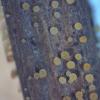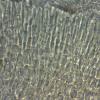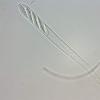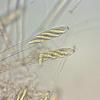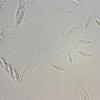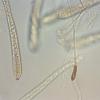
18-12-2025 17:23
 Bruno Coué
Bruno Coué
Bonjour,je serais heureux d'avoir votre avis sur c

18-12-2025 21:17
Pol DebaenstThe identification took me to Byssonectria deformi

18-12-2025 18:07
Margot en Geert VullingsThese plumes were found on rotten wood.They strong

17-12-2025 18:35
 Michel Hairaud
Michel Hairaud
Bonjour à tous/Hi to everyone I am passing along

15-12-2025 15:48
 Danny Newman
Danny Newman
Melanospora cf. lagenaria on old, rotting, fallen

15-12-2025 15:54
 Johan Boonefaes
Johan Boonefaes
Unknown anamorph found on the ground in coastal sa

15-12-2025 21:11
 Hardware Tony
Hardware Tony
Small clavate hairs, negative croziers and IKI bb

15-12-2025 07:09
 Danny Newman
Danny Newman
indet. Rutstroemiaceae sp. on unk. fallen leavesMc
Allophylaria clavuliformis?
Marcus Yeo,
07-10-2013 20:56
Apothecia are < ca 0.5 mm across; pale yellow with a short white stalk. Excipular cells are rectangular away from the margin, longer and thick-walled towards the margin (textura oblita?).
Asci are 110-130 x 7-9 µm; tip turning red in IKI.
Spores are 15-16 x 3.5-4 µm; no septa; with several large oil bodies and many smaller ones; some flattened on one side.
Paraphyses are ca 1-2 µm wide, with slightly swollen tips with conspicuous oily contents.
Because of the ascus reaction to IKI and the excipular structure, I provisionally identified it as an Allophylaria. A clavuliformis seems to be the best fit, but I have very little information on this species. I'd be grateful for any guidance.
Thanks in advance.
Marcus
Michel Hairaud,
07-10-2013 23:14

Re : Allophylaria clavuliformis?
Hi Marcus,
Did you consider A. Byssacea ?
It's not rare in wet zones such as Le Marais Poitevin, and Lycopus europaeus is the most frequent substrate.
Amitiés
Michel
Did you consider A. Byssacea ?
It's not rare in wet zones such as Le Marais Poitevin, and Lycopus europaeus is the most frequent substrate.
Amitiés
Michel
Hans-Otto Baral,
08-10-2013 08:29

Re : Allophylaria clavuliformis?
Yes I agree. Wonderful documentation!
Zotto
Zotto
Marcus Yeo,
08-10-2013 21:18
Re : Allophylaria clavuliformis?
Zotto - thank you for your help.
How does A. byssacea, which Michel mentions, differ from A. clavuliformis?
Hans-Otto Baral,
08-10-2013 21:53

Re : Allophylaria clavuliformis?
Good question!
I am unaware of a good redescription. Karsten published it 10 years after byssacea, and perhaps he thought - like me - that on dicots grows another fungus than on monocots.
I first thought the spores are wider on dicots but finally i gave up this distinction.
Zotto
I am unaware of a good redescription. Karsten published it 10 years after byssacea, and perhaps he thought - like me - that on dicots grows another fungus than on monocots.
I first thought the spores are wider on dicots but finally i gave up this distinction.
Zotto

